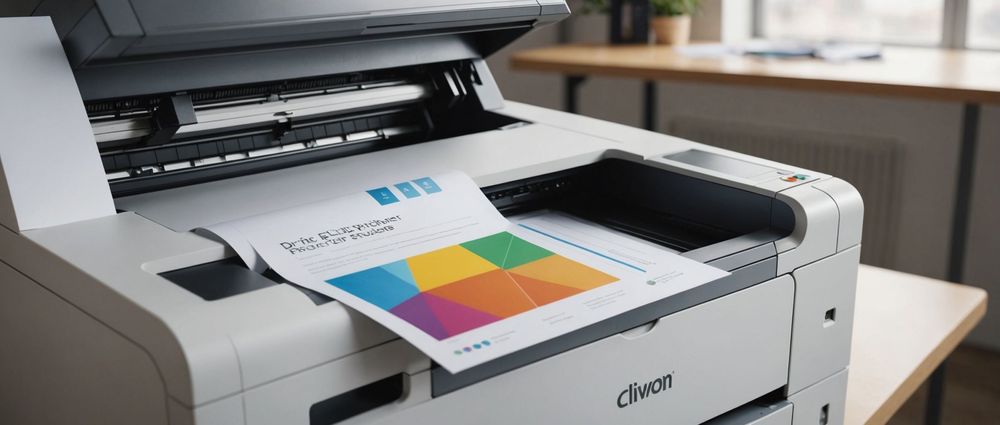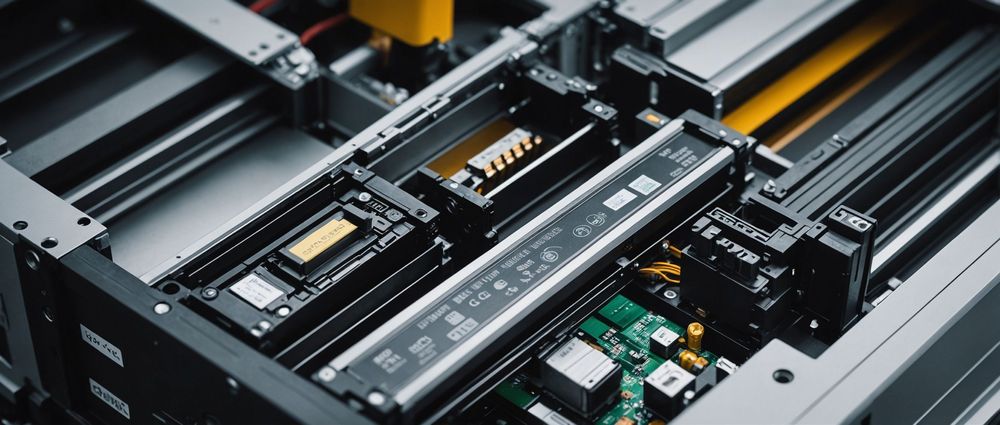A laser printer is a type of printer that uses laser technology to produce high-quality text and graphics on paper. Unlike inkjet printers, which spray tiny droplets of ink onto paper, laser printers use a dry powder known as toner. The primary advantage of laser printers is their speed and efficiency, making them ideal for both home and office use. In this article, we will explore the various components of a laser printer, the printing process, and the advantages of using laser technology for printing.
Components of a Laser Printer

Understanding how a laser printer works begins with its main components. Each of these parts plays a crucial role in the printing process, and their seamless collaboration results in high-quality prints. Here are the essential components of a laser printer:
- Laser: The core component that generates a laser beam, which scans across the surface of a drum.
- Drum Unit: A cylindrical component that holds an electrostatic charge and transfers toner to the paper.
- Toner Cartridge: Contains the fine powder used for printing. The toner is drawn to the charged areas of the drum.
- Paper Tray: Where the paper is loaded before printing. It feeds the paper into the printer as needed.
- Fuser Assembly: Applies heat and pressure to the paper, melting the toner to create a permanent bond.
These components work in concert to ensure the printer operates smoothly, allowing for efficient and high-quality printing outcomes.
The Printing Process

The operation of a laser printer is fascinating and involves several distinct steps, each essential for achieving a printed page. Here is a step-by-step breakdown of the process:
- Charging: The drum unit is charged uniformly using a high-voltage wire, creating an electrostatic field.
- Writing: The laser beam is directed onto the drum, discharging specific areas according to the image or text to be printed.
- Toner Application: The toner is negatively charged and sticks only to the discharged areas of the drum, forming the desired pattern.
- Transfer: The drum rotates, transferring the toner onto the paper as it passes through the printing mechanism.
- Fusing: The fuser assembly applies heat and pressure to bond the toner permanently to the paper.
These steps result in quick and precise printing, making laser printers highly effective for various printing needs.
Advantages of Laser Printers
Laser printers offer numerous advantages over other types of printers, particularly inkjet printers. Here are some key benefits:
- Speed: Laser printers can produce pages much faster than inkjet printers, ideal for businesses with high-volume printing needs.
- Cost-Effectiveness: While the initial investment may be higher, the cost per page is generally lower than inkjet printers, particularly for black-and-white documents.
- Quality: They produce sharper text and clearer graphics, making them suitable for professional and business documents.
- Less Maintenance: Laser printers require less frequent maintenance and have a longer lifespan compared to inkjet printers.
- No Smudging: Since the toner is melted onto the paper, there is no risk of smudging when handling printed documents.
These advantages make laser printers a go-to choice for individuals and organizations requiring dependable and high-quality printing solutions.
Common Uses of Laser Printers
Laser printers are versatile and can be employed in various settings, from small home offices to large businesses. Some common uses of laser printers include:
- Office Documents: Ideal for printing reports, memos, and other business documents.
- Marketing Materials: Perfect for creating high-quality brochures and flyers that require sharp graphics.
- Label Printing: Many businesses utilize laser printers to create labels for inventory and shipment.
- Forms and Invoices: Efficient for printing large batches of consistent documents like invoices and forms.
- Educational Materials: Schools and universities use laser printers for handouts and teaching materials.
This widespread applicability speaks to the functionality and efficiency of laser printers in various contexts.
Conclusion
In summary, laser printers are remarkable devices that leverage advanced technology to produce high-quality prints with speed and efficiency. By understanding their components and the printing process, consumers can appreciate the many advantages these printers offer over traditional inkjet models. As businesses and individuals continue to seek effective and reliable printing solutions, laser printers remain a popular choice, catering to both casual and professional needs.
FAQs
1. What is the difference between laser and inkjet printers?
Laser printers use toner and laser technology for fast, high-quality prints, while inkjet printers use liquid ink sprayed onto paper, typically resulting in slower print speeds and potential smudging.
2. Are laser printers more expensive to maintain than inkjet printers?
Generally, laser printers have a higher upfront cost but a lower cost per page, which can make them more economical to maintain over time, especially for high-volume printing.
3. Can laser printers print in color?
Yes, laser printers can print in color, but they typically cost more than monochrome laser printers. Color laser printers use multiple toner cartridges for accurate color reproduction.
4. How long does toner last in a laser printer?
The lifespan of toner cartridges varies by usage, with many standard cartridges capable of printing around 2,000 to 5,000 pages, while high-yield cartridges can print even more.
5. Are laser printers suitable for home use?
Yes, laser printers are suitable for home use, especially for users who often print documents in bulk or require high-quality prints for work or school assignments.





